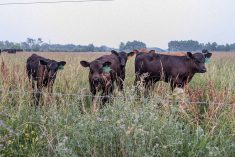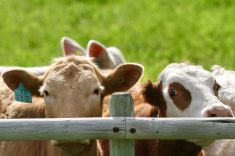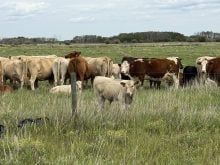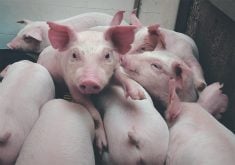Road wrecks involving livestock are more common than people realize and whether it is camels or chickens, precise rescue procedures are required.
Jennifer Woods, an Alberta livestock transportation consultant, trains emergency response teams on rescuing livestock after an accident. One of her most recent training sessions involved sawing apart a cattle liner to assess the best way to free animals quickly without harming them further.
“This is the first time anybody has had the opportunity to do this,” she said.
The entire session was videotaped and will be used in future emergency response trainings.
Read Also
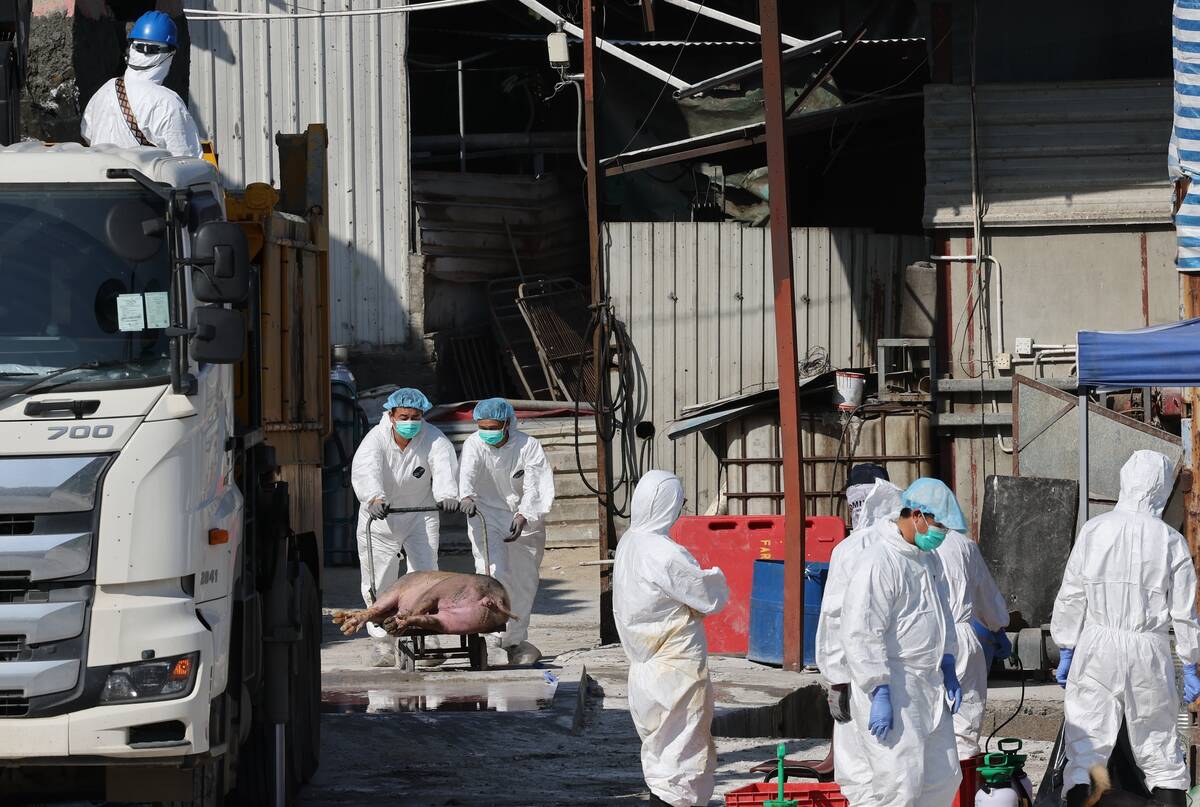
Mixed results on new African swine fever vaccine
The new African swine fever vaccine still has issues, but also gave researchers insight into how virus strain impacts protection against the deadly pig disease.
Many local fire departments are not familiar with such a situation or know what kind of tools work best to cut open trailers for animal rescue.
“You can’t take a trailer apart with the jaws (of life) which is something a lot of the fire departments try,” she said.
Most liners are aluminum and are difficult to cut through. Rescuers must be careful not to strike any animals with saws or blades. They found a metal cutting circular saw worked best.
About 95 percent of accidents happen when a truck tips over, usually on its right hand side.
When a trailer flips, the animals lose floor space as they fall against the wall of the rig. Pigs can be piled up five or six deep. Legs can get tangled or caught in ventilation holes as animals struggle to free themselves.
An Alberta livestock incident response protocol has been written after consultations with the Alberta Farm Animal Care Association, Canadian Farm Insurance and Southern Alberta Livestock Haulers Association.
The province was divided into nine zones and there is a special number for 911 dispatchers to pass on to emergency teams so they know where to find the nearest trained response team.
“There is nothing else like that except here in Alberta,” she said.
This co-ordinated response is safest for people and animals as well as more efficient because everyone knows who is in charge and what to do.
AFAC tracks the number of Alberta accidents on an annual basis. There were 21 reported incidents in 2003, 12 in 2004 and 10 so far in 2005, including six in April alone. Two were chicken liners and the rest were cattle trucks.
Cattle accidents are the most common but pigs are biggest mess because they are generally travelling in a double-deck liner. The decks can explode and animals are trapped in a pileup.
One incident in Saskatchewan saw a rollover containing 700 piglets. Another accident near Vegreville in northeastern Alberta involved 10,000 turkey chicks where 6,500 survived. Scattered across the Yellowhead Highway, they were herded back to safety using push brooms.
“People do not realize the number of animals you can have on those trailers,” she said.
The Tilley, Brooks, Hanna, Okotoks and High River areas seem to report the most accidents.
Canadian Food Inspection Agency veterinarians inspect animals to see if they are fit for reloading.
Cargill Foods at High River, Alta., will accept animals that were in accidents if they are able to arrive quickly, but Lakeside packers at Brooks, Alta., does not accept them so a place must be found to hold them until bruises or other injuries heal.
Under the Alberta Animal Protection Act, a veterinarian can decide to put down injured animals. The decision may also be made by the owner, the RCMP or eight special constables with the SPCA. In the United States, only a vet can order animals to be killed with the owner’s permission. However, Woods said it is better to have someone on site with a firearm because a vet uses injection drugs and it is difficult to restrain a frightened, injured animal for the procedure.





